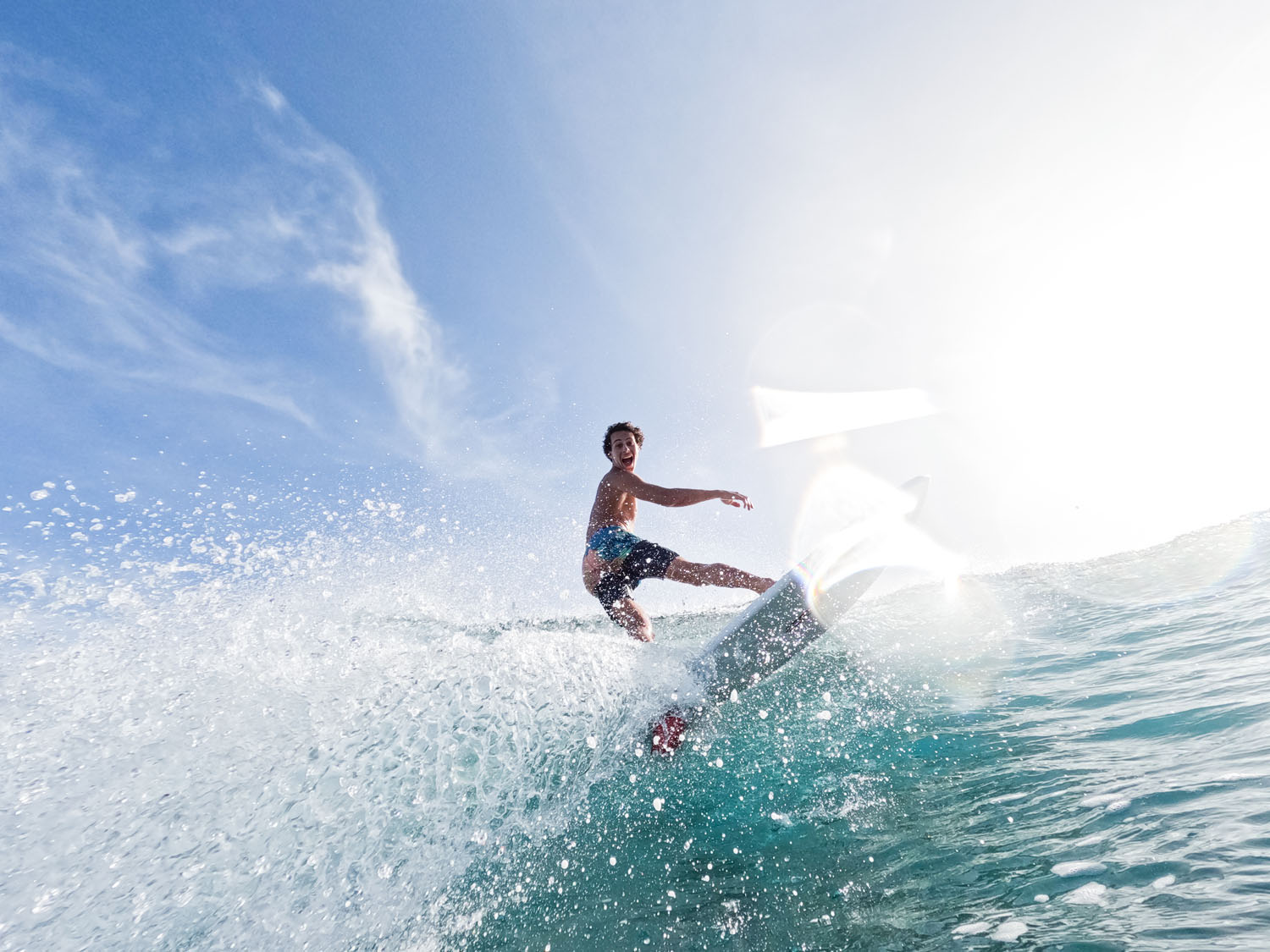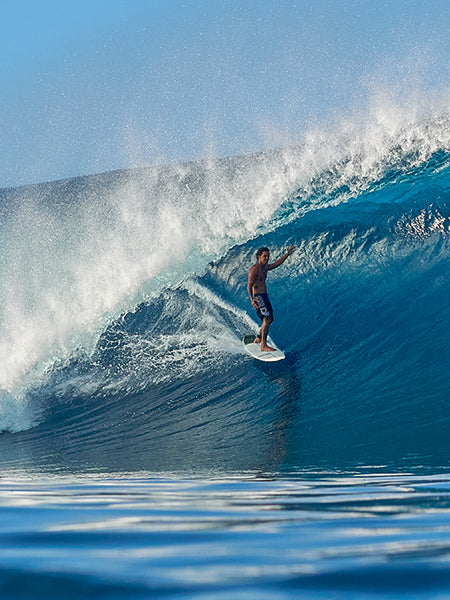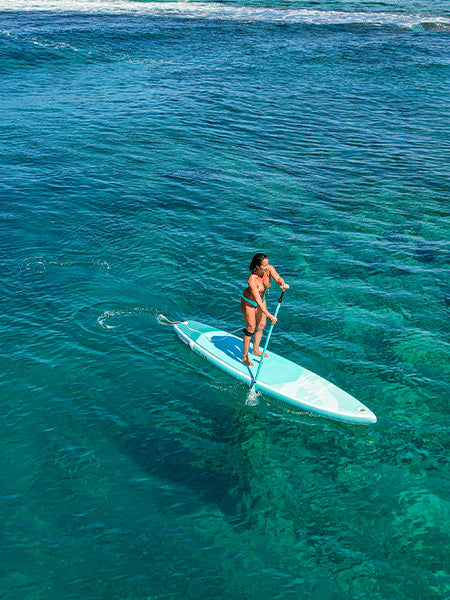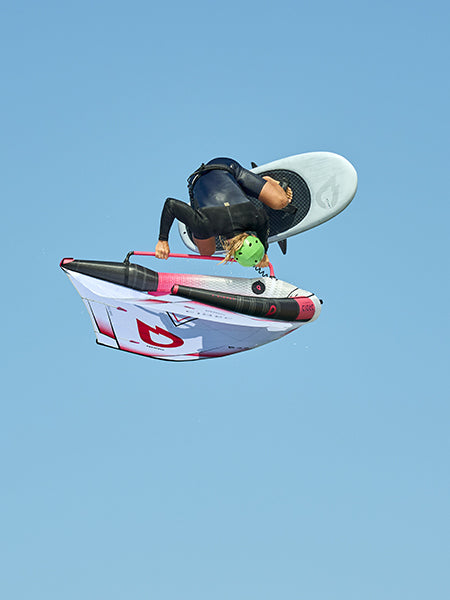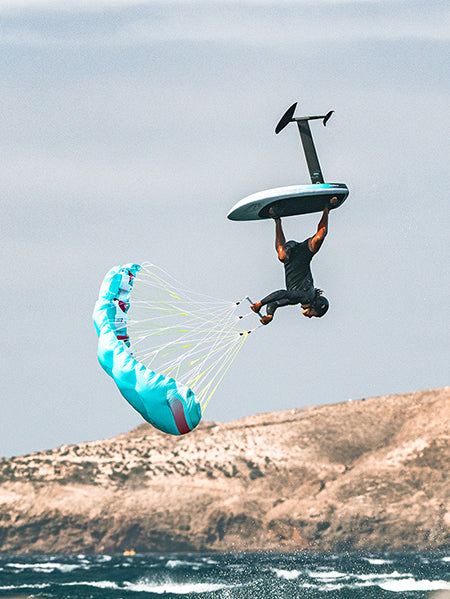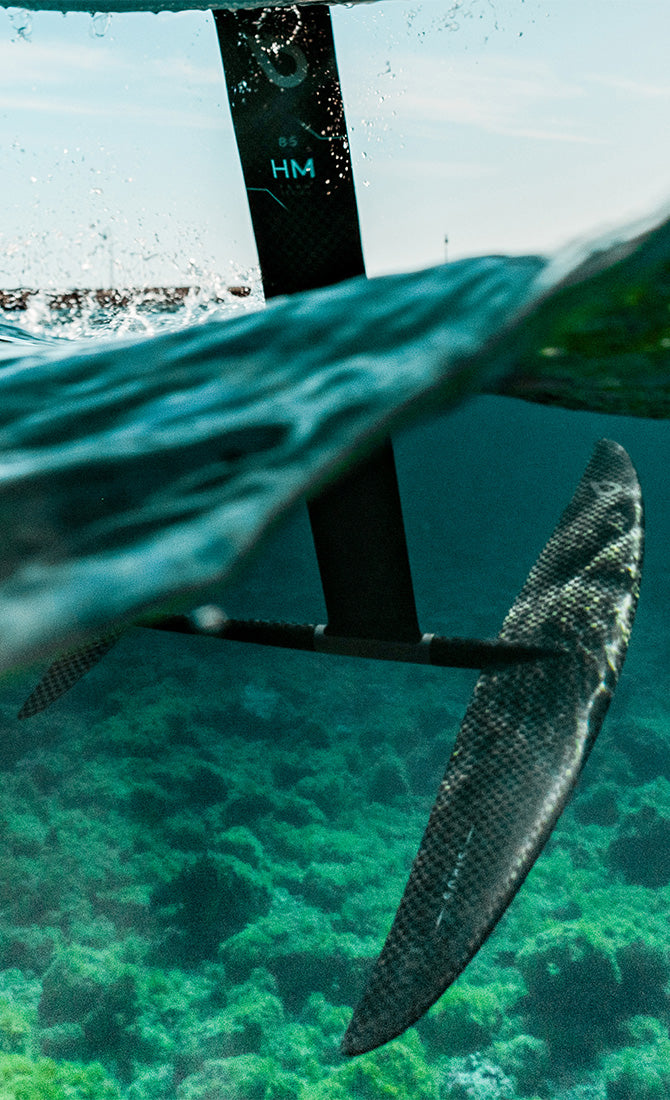Read the waves
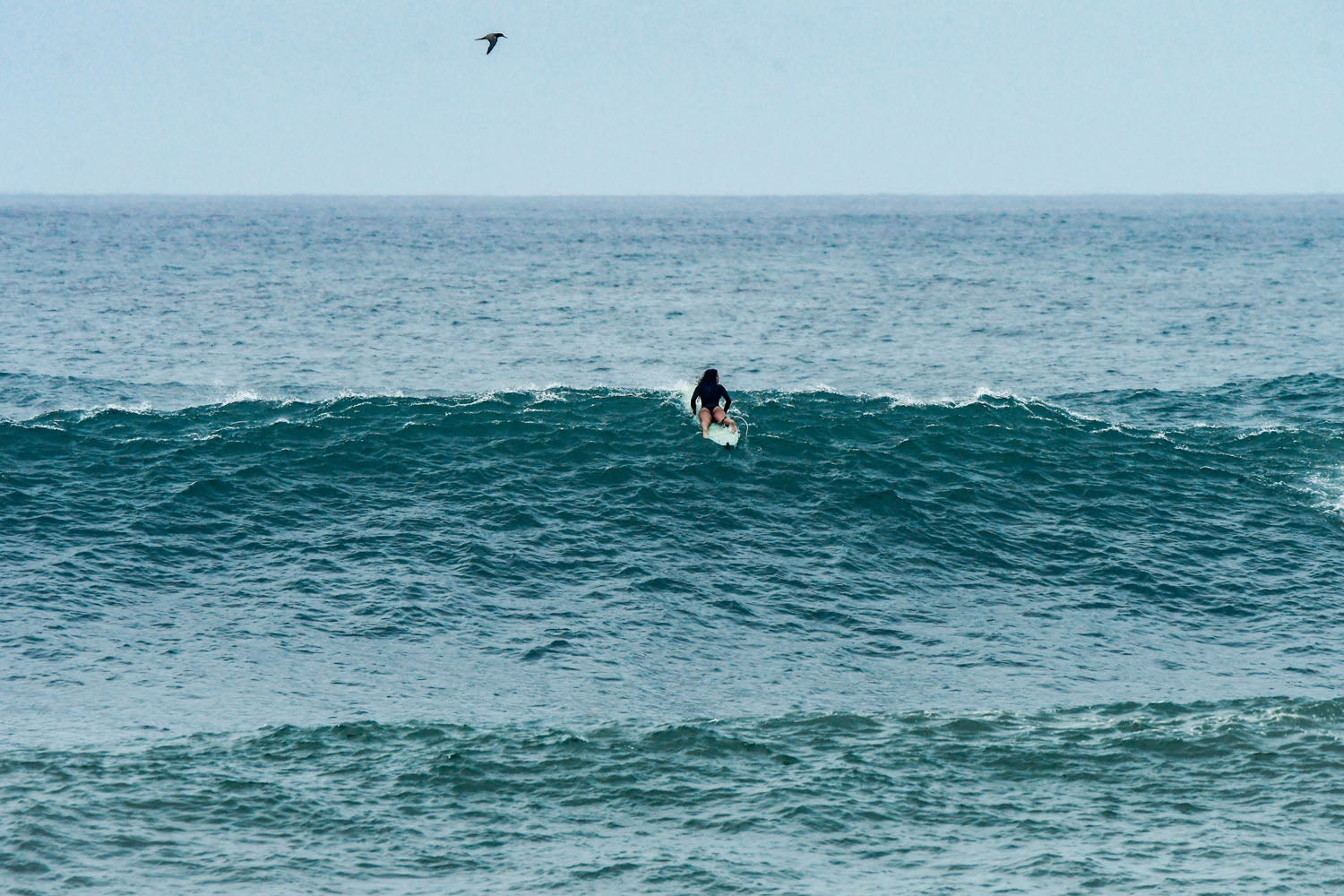
Reading, evaluating and anticipating a wave is surely one of the hardest aspects of surfing, but also certainly the most exciting.
It requires a lot of training and experience, marked by many failures. Reading a wave is like predicting the future of a wave created hundreds or thousands of kilometers away and that will break not far from you. It’s reading the seabed, the currents, the combinations of main and secondary waves, and mixing that with your surfing level and the placement of others so that the game turns to your advantage to not waste the gift of nature.
Choosing which wave to surf involves an attention as careful as discrete. At the sight of a far shadow, you will know where to place yourself and put all the chances on your side. Everything often is decided by a few paddle strokes, a few meters, to go from failure to perfection. We are often in the bet, the feeling, because the unpredictable part is often the spice of a magic wave. We see the set, we know that we are well placed, it’s our turn, it arrives, we give three paddle strokes and we’re off !!!
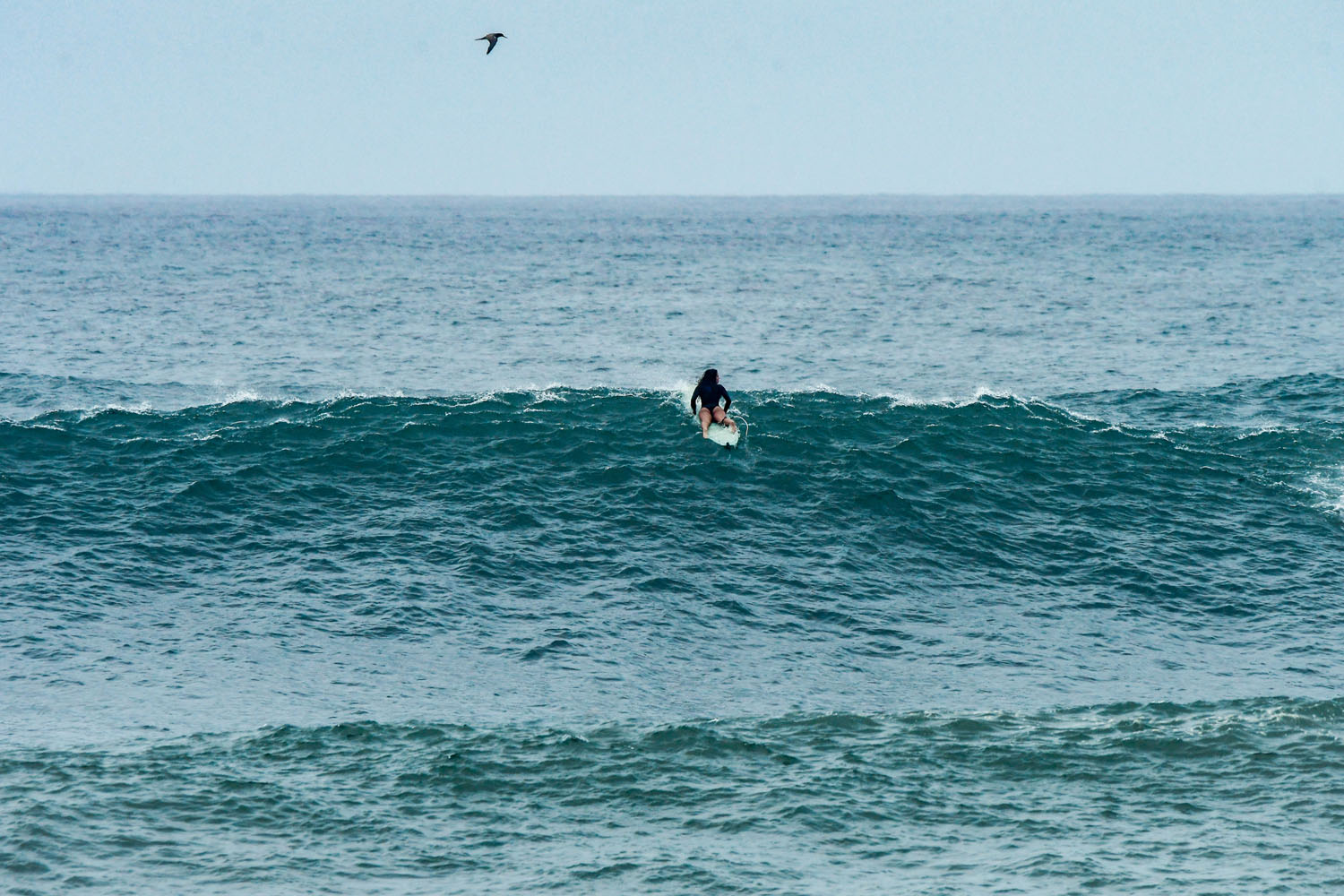
To read a wave correctly, you must already know the different parts that make it up:
The wave
The wave has a frequency, a rhythm. You must feel, if not count, this rhythm. If you manage to match yours, the sesh will be magical. If you are out of time, you will chase after the waves and fall at each set…
The shadow of the set
A major set offers different faces to the light than minor sets. Spotting a set at 500 meters is perfectly possible by relying on the colors, and even the contrasts. It’s up to you to tell the difference between a reef that darkens the water and a massive set that will darken the water without the wind features.
With experience, you will already know at several hundred meters what maneuvers you are going to make on this wave that is coming at you. Because of these contrasts depends the energy that will rock on the bottom under your feet.
The seabed
The wave born from the meeting of the seabed and the swell. Knowing the seabed by heart is a serious advantage to become a wave-reader. Spend some time at low tide if there is one, or snorkel on flat days. There’s nothing like knowing what each rock is doing to the swell.
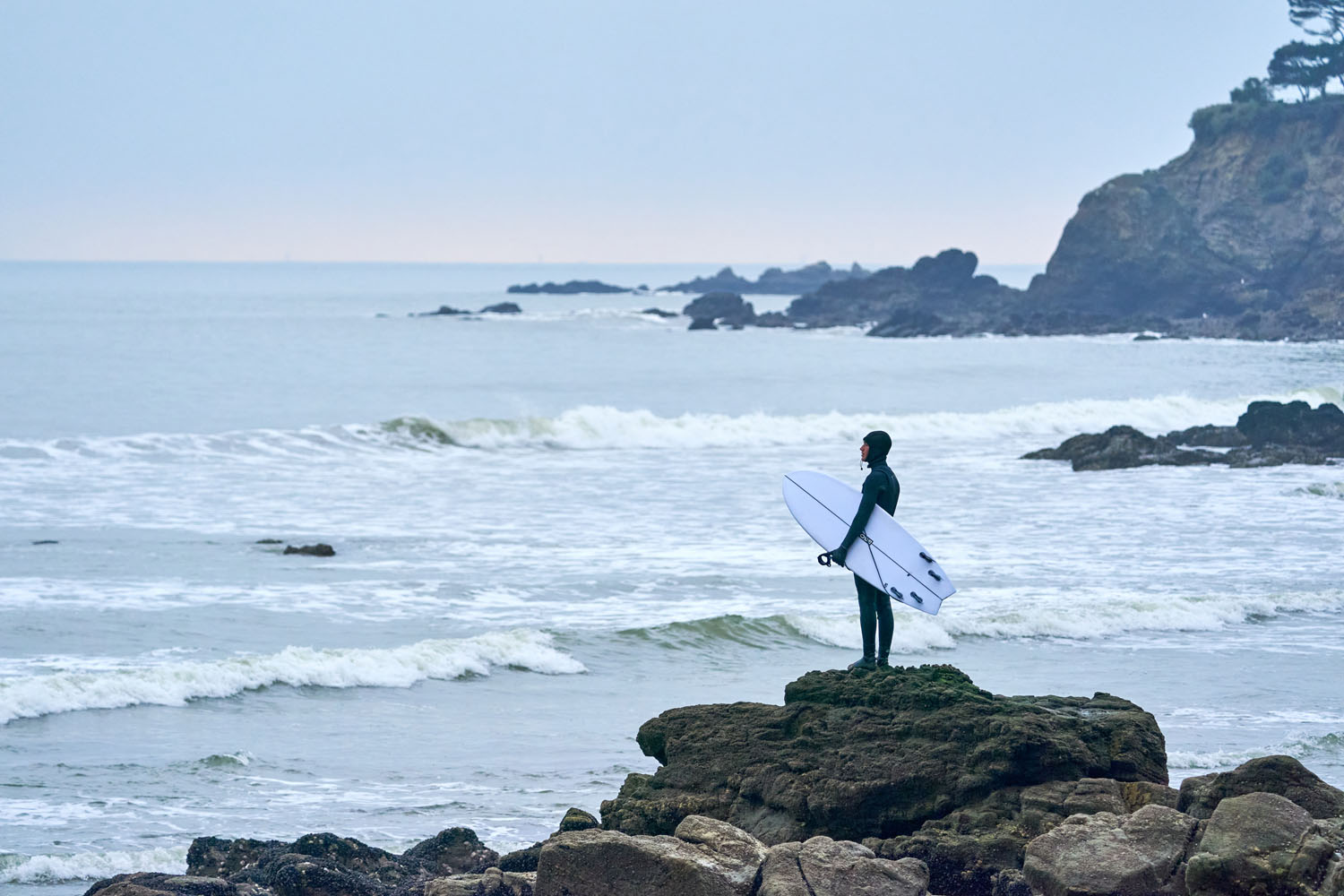
The peak
The most “offshore” point of the wave. This is where the wave will break first. It is also the starting point of the surfer who has priority over the others. We respect the rule of the turn and we remain discreet, ideally. On a definite peak, reading the waves is child’s play, but on a spot with a moving peak, it is sometimes a lottery. We will then rely more on water movements and statistics. If a rip current is formed, there are chances that the next shoulder comes to finish there. The peak will then be between two rip currents, areas characterized by anarchic lapping. Shifting peaks are the realm of opportunistic surfers, which is a real gift: to know how to drop a line, to do everything, and to score the improbable…
The lip
This is the upper part of the wave that tilts when the wave breaks, slowed down at its base by the meeting of the bottom. A large part of the power of the wave is located at this place. It is the lip that will often tell what is possible and what is not because it reflects the timing of the wave.
The curl
It is the curved part of the shoulder which is the steepest after the foam. It is the most powerful section of the wave on which pro surfers unleash their most spectacular moves.
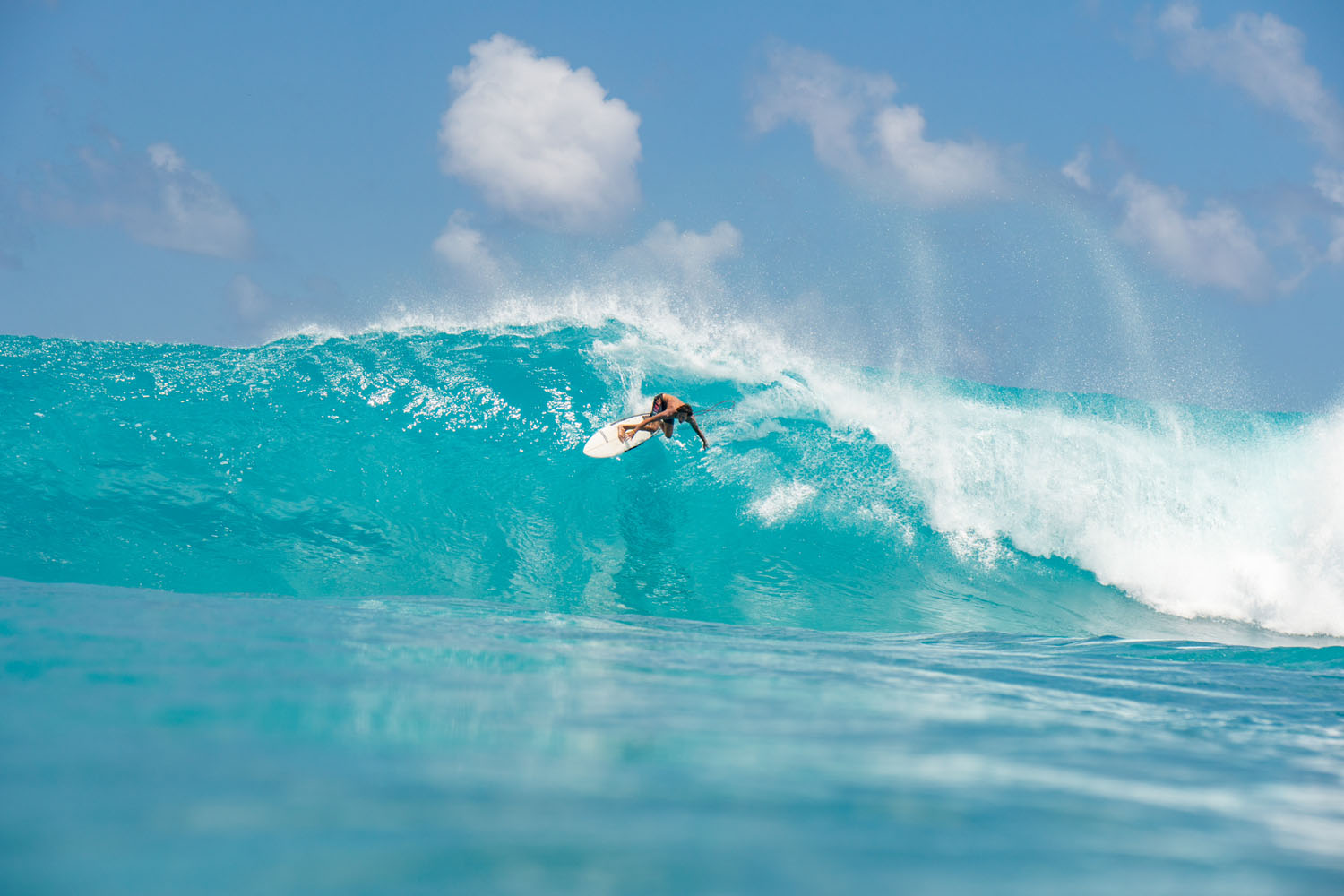
The shoulder
It is the part of the wave which has not yet broken up where the surfer can evolve. It separates the curl from the flat area at the end of the wave.The impact zone
It is the place where the wave crashes on the water. This area should be avoided as much as possible because it is very powerful. Being in this area is often synonymous with a wipe out.White water
This is the part of the wave that has already broken and has turned into a large mass of foam. This part of the wave is surely the most forgiving, the place where beginners take their first steps in surfing and learn the basic techniques.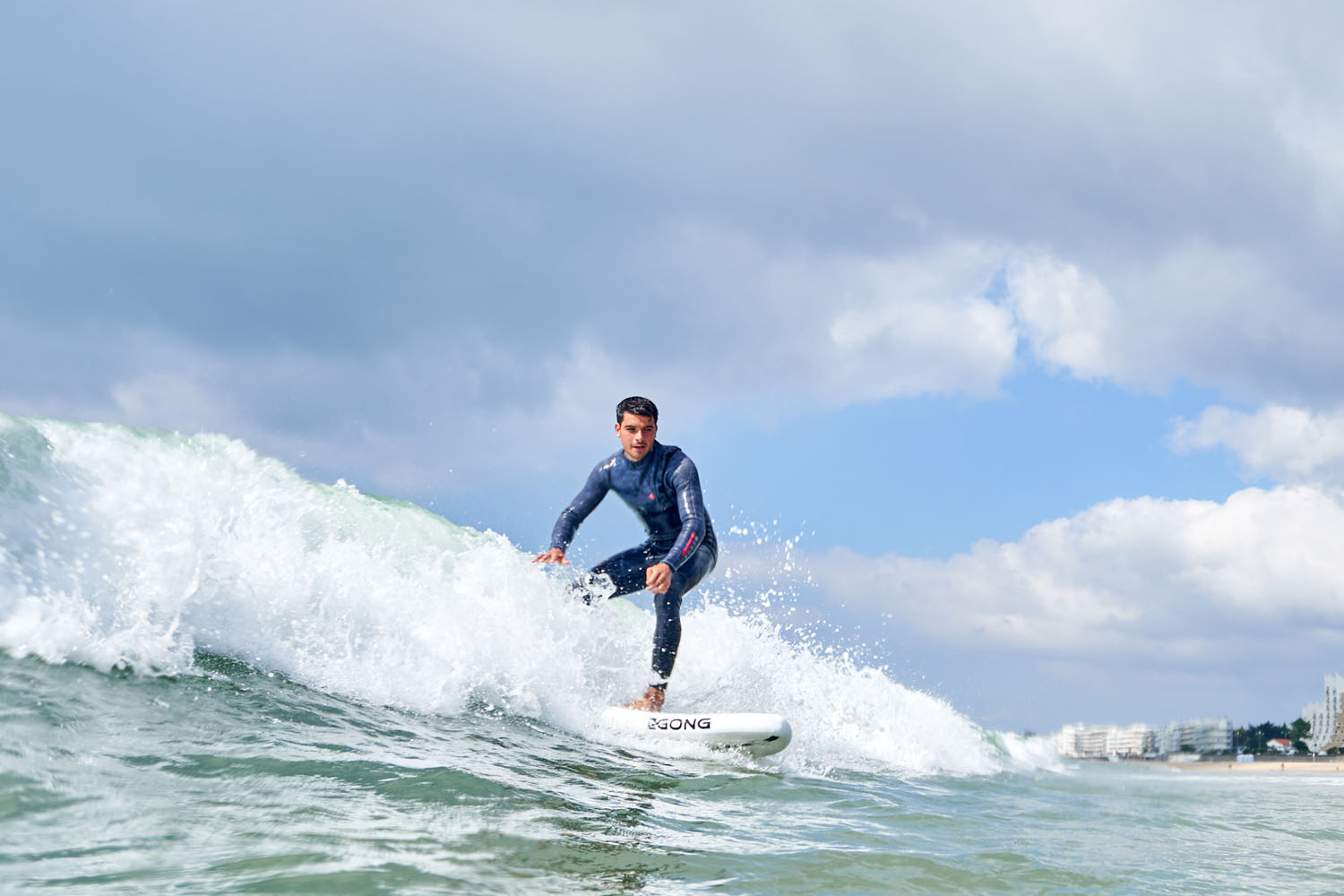
The tube
What every surfer is looking for. The Grail. The surfer finds himself under the lip of the wave.
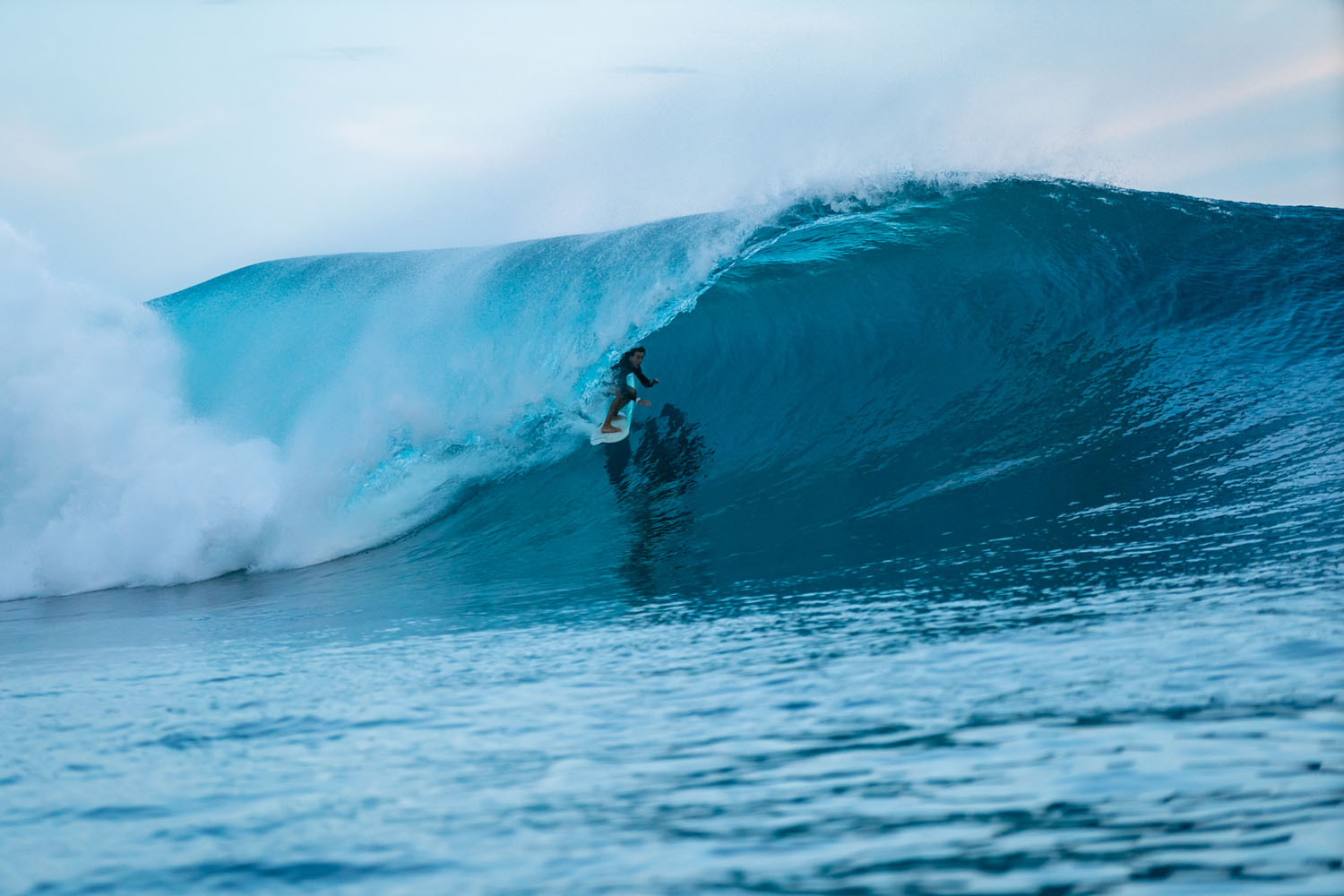
Once you’re in the line-up, you have to wait for the next set. When it approaches, you must pay attention to several elements to define exactly how the waves will break:
- You’re at the peak. Sit on your board and stare at the horizon.
- When the series comes, compare the horizon line with the swell line.
- Identify the highest point of the wave.
- The side with the steepest angle/slope is the direction the wave will break.
- The direction the wave will break tells you which way you should go, left or right.
Now that you know how to define whether the approaching wave will be a left or a right, you should know that you can face other types of waves: an “A Frame” or a “close out”.
The A frame is a wave with two shoulders. It will break on both sides, left and right. If you are perfectly placed at the peak, you can leave on the side of your choice. Two surfers could also start on their own side.
The close out is a wave that is impossible to surf. It’s a wave that will break all the way through leaving you with few options other than going straight to the beach, or becoming a world class surfer in a fraction of a second and being able to land a bottom turn and a big air to end on a high note.
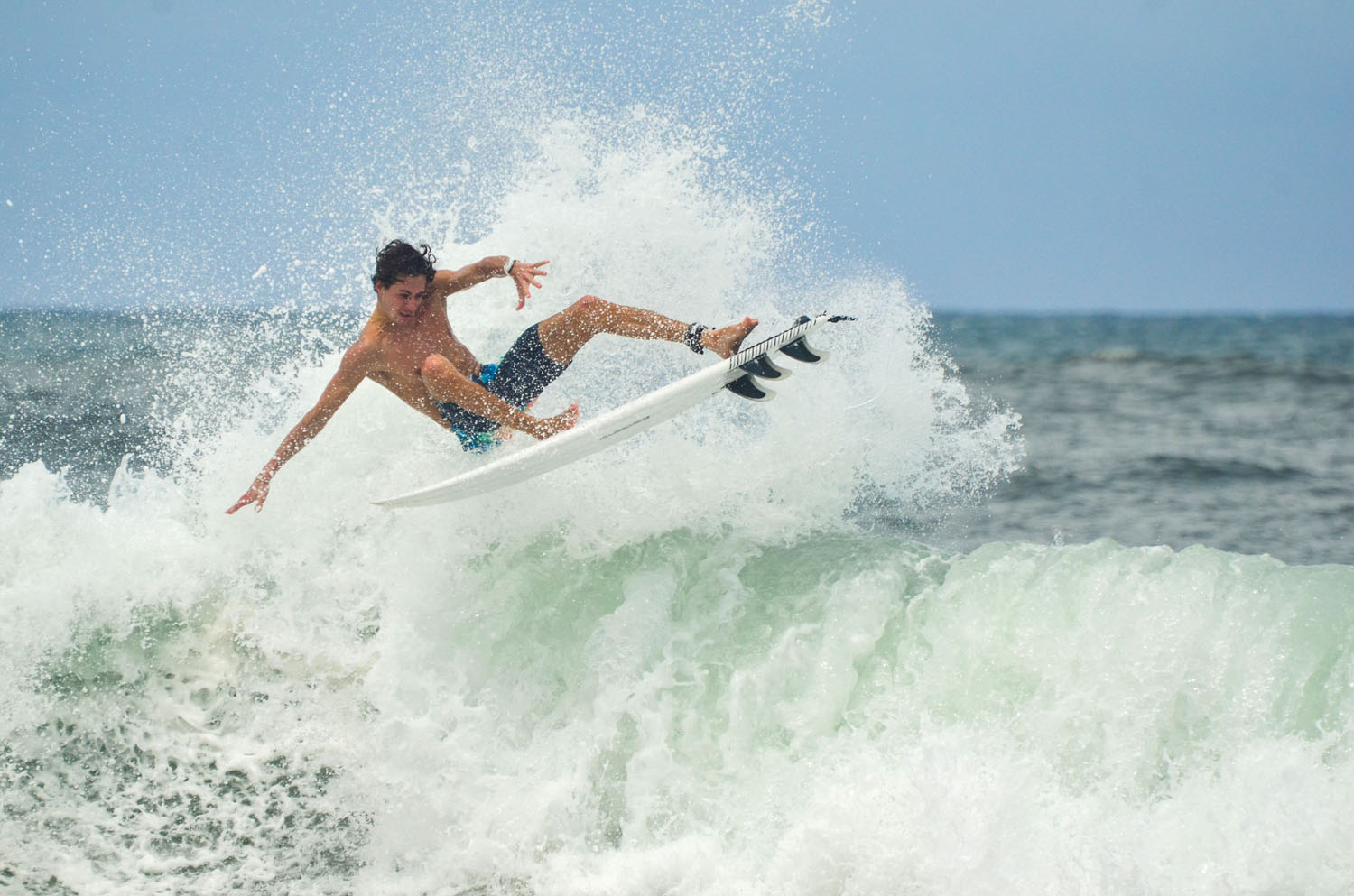
Now all you have to do is head to your home spot and start watching the swell come in. It will take you some time to get a quick and reliable analysis. But don’t give up, because the more time you spend watching, the more accurate your wave reading will be.
Some tips:
- Once you arrive at the spot, take the time to watch a few sets from the beach. This will help you identify the best waves to catch. Also look at the way the waves break, left, right…
- Once in the water, watch carefully and go for it. You’ll inevitably make mistakes, but you don’t get something for nothing.
- Watch and learn. In the best case, you go in the water with an experienced buddy who can share with you his science on wave reading. Otherwise, try to spot experienced surfers at the peak. Those with good reading skills will start paddling before you’ve even had a chance to observe anything.
- Be patient. When a set comes in, avoid riding the first wave. It is usually smaller and softer than the ones behind it. The third wave is usually (but let’s not make a generalization ;)) one of the best.
- Smile. Because when you make your take-off at the right place and time, you will surely be the happiest person in the world.
